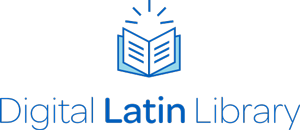-
Bellum Alexandrinum
Cynthia Damon, et al.
Society for Classical Studies
TEI XML encoding:
Samuel J. Huskey
Programming for automatic generation of TEI XML:
Virgina K. Felkner
Coauthor of content related to section 2.5:
Dallas Simons
Coauthor of content related to sections 12.1–2 and 13.5:
Tom Vozar
Coauthor of content related to section 26.1–2:
Marcie Persyn
Coauthor of content related to sections 35.3 and 36.4–5:
Maria Kovalchuk
Coauthor of content related to sections 47.2, 49.1, and 49.2–3:
Tim Warnock
Coauthor of content related to section 60.2:
Isabella Reinhardt
Coauthor of content related to sections 63.5 and 66.3–4:
Brian Credo
Coauthor of content related to sections 67.1 and 68.1:
Amelia Bensch-Schaus
Coauthor of content related to sections 72.2–3 and 74.4:
Wes Hanson
First Edition
The Digital Latin Library
650 Parrington Oval
Carnegie Building 101
Norman
OK
73071
USA
The University of Oklahoma
Norman, OK
2022
Creative
Commons Attribution-ShareAlike 4.0 International Licence (CC BY-SA 4.0)
Library of Digital Latin Texts
Edited by
Samuel J. Huskey
1
Born digital.
Additional materials in the LDLT edition:
Studies on the Text of the Bellum Alexandrinum
Twenty-three notes on difficult spots in the text by members of the Latin 540
classes in 2015 and 2017. These present in depth the arguments that underlie
the various remedies suggested in the edition's critical apparatus. They are
signaled in the relevant apparatus note by a diamond (◊) before the lemma.
Transcriptions of the manuscript witnesses (MUSTV)
The five manuscript witnesses used to constitute the text were transcribed by
members of the Postbac Latin seminars in 2014 and 2016, and by highschool
volunteers in the summer of 2016. The transcriptions were checked and
doublechecked by the transcribing teams, by other class members, and by the
Latin 540 students who used the transcriptions to generate the critical
apparatus. Machine-collation was used to locate discrepancies that needed
verification; we used the collation tool at juxtacommons.org. (For the process
see Damon and Huskey, forthcoming.) Errors certainly remain, and many features
of the original are not reflected in these simple documents, but they are
helpful maps for finding a particular bit of text in a manuscript book or a
page image. Abbreviations are filled out unless obscure (as is sometimes the
case with monetary amounts, for example), punctuation is ignored, and
capitalization is reproduced rather erratically. Where a manuscript contains a
correction the transcription records the corrected form, not the original
reading; the original readings were recorded elsewhere and are taken account of
in the apparatus and Appendix critica.
Translation
The students in the two Latin 540 classes produced a translation of the Bellum Alexandrinum in the course of their work on the
text. It is a work of many hands and makes no claim to stylistic merit or even
consistency. It is designed to communicate our interpretation of the text,
particularly where we have emended it.
Conspectus editionum
A list of the 98 places where the reading of the LDLT Bellum
Alexandrinum differs from that of Andrieu 1954, which we used as our
base text. (Differences of orthography and punctuation are not reported.)

